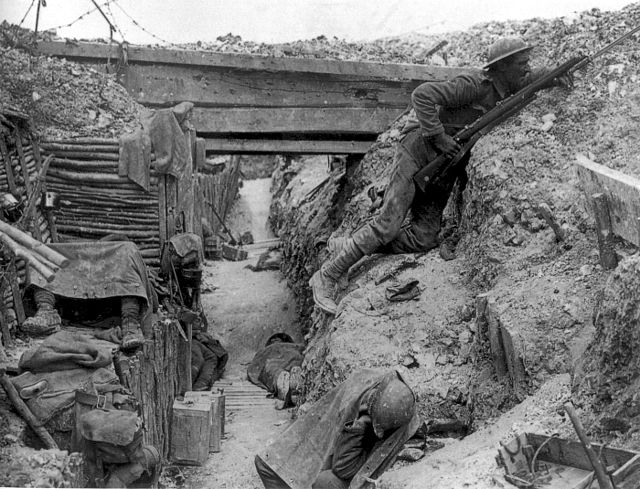It’s hard to think of a significant conflict more misunderstood by the general public than the First World War, from causes to consequences and everything in between. I was reminded of this once again this fall upon seeing articles reviewing an upcoming strategy video game, The Great War: Western Front. The static nature of combat in northern France and Belgium throughout much of the war has traditionally presented complications for designing an accurate yet engaging strategy game in digital media, but this one appears to steer into those very conditions, emphasizing logistics, deployment, and fortification above battlefield tactics or even strategy, while players operate within a framework based not on grand territorial gains but on how many yards of ground an offensive gains. All very true to the historical unfolding of the Western Front between 1914 and 1918. Yet in crafting this reenactment of trench warfare, The Great War: Western Front joins other First World War strategy games in perpetuating myths and a fundamental misunderstanding of its subject’s combat and military developments.
I think it’s safe to say that if a member of the general public has impressions of the First World War at all, they are that of trench warfare–soldiers advancing near-suicidally en masse into the withering fire of machine guns and modern weaponry, eventually digging elaborate systems of fortifications to protect themselves from murderous fire and turning war into a miserable contest of inches. There are a number of problems with this memory, most significantly that this mode of warfare really only applied to the Western Front in northern France and Belgium; other theaters, especially in Eastern Europe and, later in the war, the MIddle East, proved much more mobile, even using cavalry effectively in open country. The purpose of the trenches is also often mistaken. These massive earthmoving and engineering efforts were designed to protect infantry from artillery, which had made massive advances in range and destructive capacity in the decades before the conflict. Finally, the Western Front itself opened up in the summer and fall of 1918 as the Allies perfected combined arms operations and began breaking through German defenses in what only the November 11 Armistice prevented from becoming a full rout across the Rhine.
Static warfare from 1914 to 1918, then, was a highly conditional response to a combination of technology, logistical ability, terrain, and strategy. Yet games like Great War treat it instead as an immutable truth of the conflict, using it to define the basic parameters of players’ experience. Another example is Axis & Allies: 1914, where players are limited to a single wave of attack per turn in any given offensive. This artificial imposition of trench warfare on players may invoke certain themes of the First World War for their audiences, but it is bad history. Rightly or wrongly, video games are increasingly a leading medium in learning history, and I cannot help but think of all the better ways of creating a game that truly captures the command experience of the First World War. Instead of mandating players entrench, make artillery so deadly that they really have no choice if they want to keep their army intact–but could theoretically see a way forward without entrenching if they build up enough troop mass, use the terrain to their advantage, or outmaneuver the enemy. Keep the public’s expectations high, and heavily penalize players’ failure to win the war before Christmas–forcing them to rely on propaganda campaigns and societal reorganization to stay in the fight for the long term. Introduce technology and tactics that can break the stalemate–but don’t eliminate the danger of over-extending or wearing out one’s soldiers such that a well-timed counterattack reverses all your gains. Until I hear of any of these innovations, I’ll continue only cautiously following game announcements in this genre. Who knows? Maybe I’ll just have to design my own.
